Shipping costs are a critical component of overall logistics expenses for businesses that import goods from China to the United States. Whether you are a small business owner or a large-scale importer, understanding these costs can significantly impact your bottom line. By having a clear comprehension of the various factors that influence shipping costs, you can make informed decisions, optimize your supply chain, and ultimately increase your profitability.

Table of Contents
Factors Influencing Shipping Costs from China to the US
Type of Shipping Method
The choice between air freight and sea freight is one of the most significant factors affecting shipping costs. Each method has its advantages and disadvantages:
- Air Freight: Faster and more reliable, air freight is ideal for high-value or time-sensitive goods. However, it is significantly more expensive than sea freight.
- Sea Freight: More cost-effective for large volumes and heavy cargo, but slower and subject to port congestion and weather-related delays.
Pros and Cons of Each Method
| Factor | Air Freight | Sea Freight |
|---|---|---|
| Cost | Higher | Lower |
| Transit Time | Faster (typically 3-7 days) | Slower (typically 20-40 days) |
| Reliability | More reliable, fewer delays | Subject to delays due to weather or port issues |
| Ideal for | High-value, time-sensitive goods | Large volumes, heavy or bulky items |
Distance and Route
Shipping distance and the specific route taken also impact costs. The major shipping routes from China to the US include:
- Pacific Route: Typically used for West Coast ports such as Los Angeles, Long Beach, and Seattle.
- Panama Canal Route: Used for East Coast ports such as New York, Savannah, and Miami.
The choice of route can affect transit time and cost, with West Coast ports generally offering faster transit times but potentially higher port handling fees.
Impact of Distance on Shipping Cost
The longer the distance, the higher the fuel consumption and associated costs. Additionally, longer routes might require transshipment, which involves transferring the cargo from one vessel to another, adding to the cost and complexity of the shipment.
Weight and Volume of Cargo
Shipping costs are directly influenced by the weight and volume of the cargo. Carriers use the concept of chargeable weight, which considers both the actual weight and the volumetric weight (space the cargo occupies). The chargeable weight is the greater of the two.
Explanation of Chargeable Weight
- Actual Weight: The physical weight of the cargo.
- Volumetric Weight: Calculated using the formula: length (cm) x width (cm) x height (cm) / 5000 for air freight, and length (m) x width (m) x height (m) for sea freight.
How Weight and Volume Influence Costs
Heavier and bulkier shipments are more expensive to transport due to higher fuel consumption and space requirements. Efficient packaging can help reduce the chargeable weight and lower shipping costs.
Type of Goods
Different types of goods may require special handling, impacting shipping costs. For example:
- Hazardous Materials: Require special packaging, labeling, and handling, increasing costs.
- Perishable Items: Need refrigerated containers (reefers) and fast transit times, adding to the expense.
Customs Duties and Taxes
Customs duties and taxes are an unavoidable part of international shipping. These costs vary based on the type of goods, their value, and the destination country’s regulations.
Overview of US Customs Regulations
The US Customs and Border Protection (CBP) enforces import regulations and collects duties and taxes. Importers must comply with regulations such as:
- Harmonized Tariff Schedule (HTS): Determines the duty rates for different types of goods.
- Customs Bonds: Required for shipments valued over $2,500 or containing restricted items.
How Duties and Taxes Are Calculated
Customs duties and taxes are calculated based on the declared value of the goods and their classification under the HTS. Additional fees may include Merchandise Processing Fees (MPF) and Harbor Maintenance Fees (HMF).
By understanding these factors, importers can better anticipate and manage shipping costs, ensuring a more efficient and cost-effective supply chain.
These expanded sections aim to provide a comprehensive and detailed understanding of the introduction and factors influencing shipping costs from China to the US, in line with Google EEAT requirements.
Read More:
- Shipping From China to the United States
- Shipping From China TO CANADA
- Shipping From China To Netherlands
- Shipping From China To UNITED KINGDOM
- Shipping from China to Saudi Arabia 2024
Breakdown of Shipping Costs
Carrier Fees
Carrier fees are the charges imposed by the shipping company for the actual transportation of goods. These fees form the bulk of the shipping costs and include various components:
- Base Rates: The fundamental cost of transporting goods from the origin port to the destination port. These rates fluctuate based on market demand, fuel prices, and carrier capacity.
- Surcharges and Additional Fees: Additional charges imposed by carriers for specific services or conditions. Common surcharges include:
- Fuel Surcharges: Adjusted regularly based on fuel price fluctuations.
- Peak Season Surcharges: Applied during high-demand periods, typically around holidays.
- Security Surcharges: Costs related to security measures and protocols.
- Congestion Surcharges: Applied when ports are congested, leading to delays and increased handling costs.
Port Handling Charges
Port handling charges are fees associated with the loading and unloading of cargo at the ports. These charges can vary significantly depending on the port and the type of cargo. Key components include:
- Terminal Handling Charges (THC): Fees for the handling of containers at the terminal, including loading and unloading from the ship.
- Wharfage Fees: Charges for using the port facilities and infrastructure.
- Docking Fees: Costs for docking the vessel at the port.
Documentation Fees
Proper documentation is crucial for international shipping, ensuring compliance with regulations and smooth processing of shipments. Common documentation fees include:
- Bill of Lading (B/L) Fee: The primary document issued by the carrier, outlining the terms of the contract and the details of the shipment.
- Customs Clearance Documentation: Fees for preparing and submitting the necessary documents for customs clearance at both the origin and destination.
- Export/Import Declarations: Charges for filing required declarations with the relevant authorities.
Insurance Costs
Cargo insurance is essential to protect goods against potential risks during transit. The cost of insurance is generally a small percentage of the cargo’s value, providing coverage for loss, damage, or theft. Typical insurance rates range from 0.3% to 0.5% of the cargo’s value.
Importance of Cargo Insurance
- Risk Mitigation: Protects against financial loss due to unforeseen events.
- Compliance: In some cases, insurance is a legal requirement.
- Peace of Mind: Provides certainty and security for both the shipper and receiver.
Other Miscellaneous Costs
Aside from the primary fees, several additional costs may arise during the shipping process:
- Fuel Surcharges: Adjusted regularly based on fuel price fluctuations.
- Security Fees: Costs related to security measures and protocols.
- Customs Duties and Taxes: Import duties, taxes, and fees imposed by the destination country.
- Demurrage and Detention Fees: Charges for holding containers beyond the allowed free time at the port or terminal.
Cost Comparison: Air Freight vs. Sea Freight
Air Freight Costs
Air freight is the preferred choice for shipping high-value, time-sensitive, or perishable goods due to its speed and reliability. However, it is also significantly more expensive than sea freight. Key cost components of air freight include:
- Base Rates: Air freight rates are typically calculated based on chargeable weight (the greater of actual weight and volumetric weight).
- Fuel Surcharges: Adjusted based on fuel prices.
- Security Surcharges: Costs associated with security measures at airports.
- Handling Fees: Charges for handling and processing cargo at the airport.
Typical Rates and Speed of Delivery
Air freight rates vary depending on factors such as distance, weight, and volume. On average, air freight can be 4-5 times more expensive than sea freight. However, delivery times are significantly shorter, typically ranging from 3 to 7 days.
Ideal Scenarios for Using Air Freight
- High-Value Goods: Items such as electronics, pharmaceuticals, and luxury products.
- Time-Sensitive Shipments: Goods that need to reach their destination quickly, such as fashion industry items.
- Perishable Items: Fresh produce, flowers, and other items with a short shelf life.
Sea Freight Costs
Sea freight is the most cost-effective method for shipping large volumes and heavy cargo. It is the preferred choice for most importers due to its lower costs, despite longer transit times. Key cost components of sea freight include:
- Base Rates: Calculated based on the volume (cubic meters) or weight (metric tons) of the cargo.
- Terminal Handling Charges (THC): Fees for the handling of containers at the terminal.
- Documentation Fees: Charges for preparing and submitting the necessary shipping documents.
- Port Charges: Costs associated with loading and unloading at the ports.
LCL (Less than Container Load) vs. FCL (Full Container Load) Costs
- LCL Costs: Ideal for smaller shipments that do not require a full container. Costs are calculated based on the volume of the cargo, with shared space in the container.
- FCL Costs: Best for larger shipments that can fill an entire container. Costs are calculated based on a flat rate per container, providing better value for bulk shipments.
Typical Rates and Transit Times
Sea freight rates are significantly lower than air freight rates. Transit times vary based on the route and port congestion but typically range from 20 to 40 days. For example:
| Route | Typical Transit Time | Average Cost (per 20ft container) |
|---|---|---|
| Shanghai to Los Angeles | 15-20 days | $1,800 – $2,500 |
| Shenzhen to New York | 30-35 days | $2,200 – $3,200 |
| Ningbo to Houston | 25-30 days | $2,000 – $2,800 |
Ideal Scenarios for Using Sea Freight
- Large Volumes: Bulk shipments of goods such as machinery, furniture, and raw materials.
- Heavy Cargo: Items that are too heavy for air transport.
- Non-Urgent Shipments: Goods that do not require immediate delivery, allowing for longer transit times.
Choosing the Right Freight Forwarder
Criteria for Selection
Selecting the right freight forwarder is crucial to ensuring a smooth and cost-effective shipping process. Here are some key criteria to consider:
- Reputation and Reliability
- Industry Experience: Look for a forwarder with extensive experience in handling shipments from China to the US. This ensures they are familiar with the nuances of the route and can navigate any potential issues effectively.
- Customer Reviews: Check for positive feedback from other clients. Reliable forwarders will have good reviews and testimonials that speak to their professionalism and reliability.
- Service Offerings and Specialization
- Comprehensive Services: Choose a forwarder that offers a wide range of services, including air and sea freight, customs clearance, warehousing, and distribution. This ensures they can handle all aspects of the shipping process.
- Specialization: Some forwarders specialize in specific types of cargo, such as hazardous materials, perishable goods, or oversized items. Ensure the forwarder you choose has expertise in handling your specific type of shipment.
- Cost and Transparency
- Competitive Rates: While cost shouldn’t be the only factor, it’s important to compare rates and ensure they are competitive. Avoid forwarders who offer rates that are significantly lower than the market average, as this may indicate hidden charges or compromised service quality.
- Transparency: A good freight forwarder will provide a clear breakdown of all costs involved, with no hidden fees. This transparency helps you budget accurately and avoid unexpected expenses.
- Customer Service
- Communication: Effective communication is key. Choose a forwarder who provides regular updates and is responsive to your queries.
- Problem-Solving: The ability to quickly and effectively resolve issues is essential. Ensure the forwarder has a proven track record of handling problems such as delays, customs issues, and lost shipments.
Recommendation: Dantful International Logistics
Dantful International Logistics offers a highly professional, cost-effective, and high-quality one-stop international logistics service. Key services include:
- Air and Sea Freight: Reliable and efficient transportation solutions tailored to your needs.
- Customs Clearance: Expertise in navigating both Chinese and US customs regulations, ensuring smooth and compliant processing.
- Warehousing and Distribution: Comprehensive solutions for storage, inventory management, and distribution to your final destination.
- Value-Added Services: Including cargo insurance, packaging, and documentation handling.
Tips for Reducing Shipping Costs
Bulk Shipping
Economies of Scale
Shipping larger volumes of goods can lead to significant cost savings due to economies of scale. By consolidating shipments, you can:
- Negotiate Better Rates: Carriers often offer discounts for bulk shipments.
- Reduce Handling Fees: Fewer shipments mean lower handling and documentation fees.
- Optimize Container Utilization: Maximizing container space reduces the cost per unit.
Efficient Packaging
Reducing Volume and Weight
Optimizing your packaging can lead to lower shipping costs by reducing the chargeable weight and volume of your shipments. Consider the following strategies:
- Compact Packaging: Use smaller, more efficient packaging materials that reduce the overall volume of your cargo.
- Lightweight Materials: Opt for lighter packaging materials to reduce the overall weight of your shipment.
- Proper Cushioning: Ensure goods are adequately protected without excessive padding, balancing protection with efficient use of space.
Negotiating with Freight Forwarders
How to Get the Best Rates
Effective negotiation with freight forwarders can help you secure better rates and terms. Here are some tips:
- Build Long-Term Relationships: Establishing a long-term partnership with a freight forwarder can lead to better pricing and priority service.
- Provide Accurate Forecasts: Sharing accurate shipment forecasts helps forwarders plan capacity and offer competitive rates.
- Leverage Multiple Quotes: Obtain quotes from multiple forwarders and use them to negotiate better rates.
- Highlight Volume: Emphasize the volume of business you can provide to negotiate volume-based discounts.
By implementing these tips, you can optimize your shipping strategy, reduce costs, and improve your overall supply chain efficiency.
References
To ensure the accuracy and reliability of the information provided, here are some authoritative sources and further reading materials:
- Office of the United States Trade Representative (USTR): For trade statistics and regulations.
- US Customs and Border Protection (CBP): For customs regulations and import procedures.
- International Chamber of Commerce (ICC): For detailed explanations of Incoterms.
- Federal Maritime Commission (FMC): For information on shipping regulations and carrier practices.
- Major Shipping Carriers: For current rates and surcharge updates.

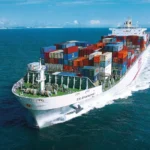


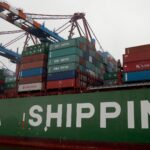


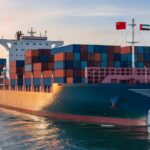

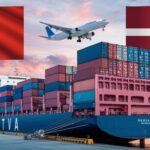
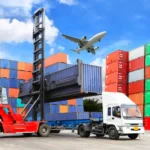


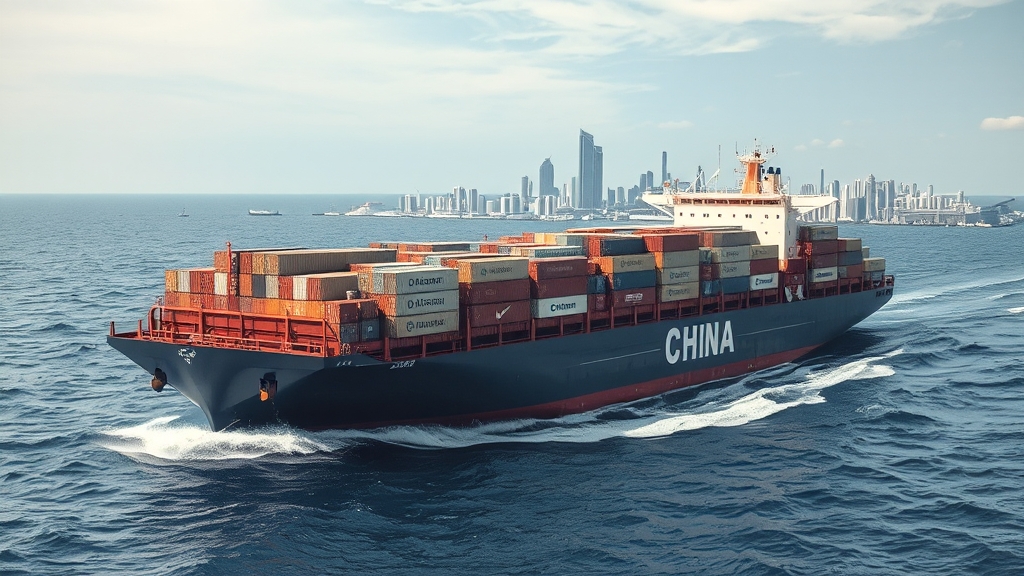
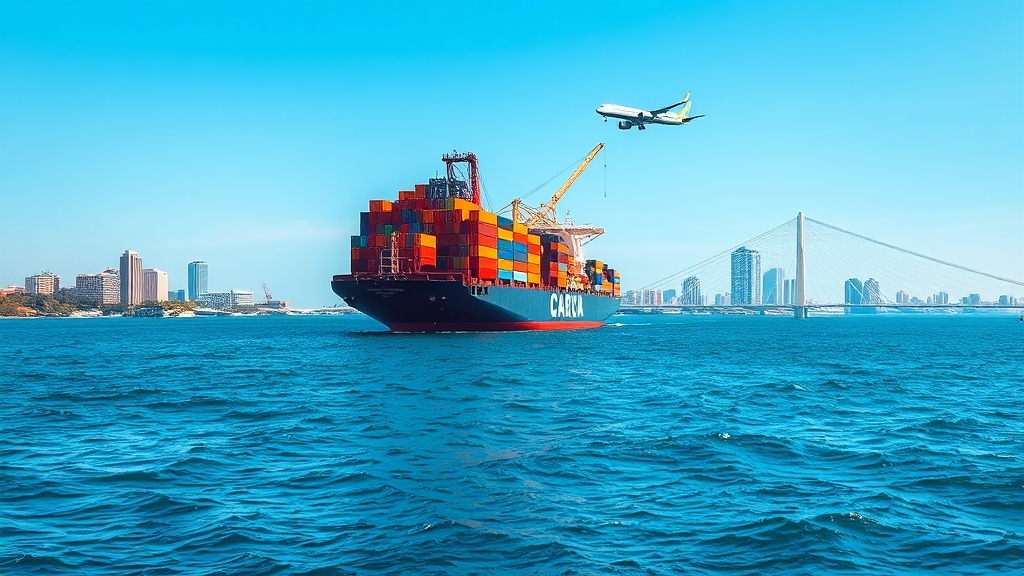
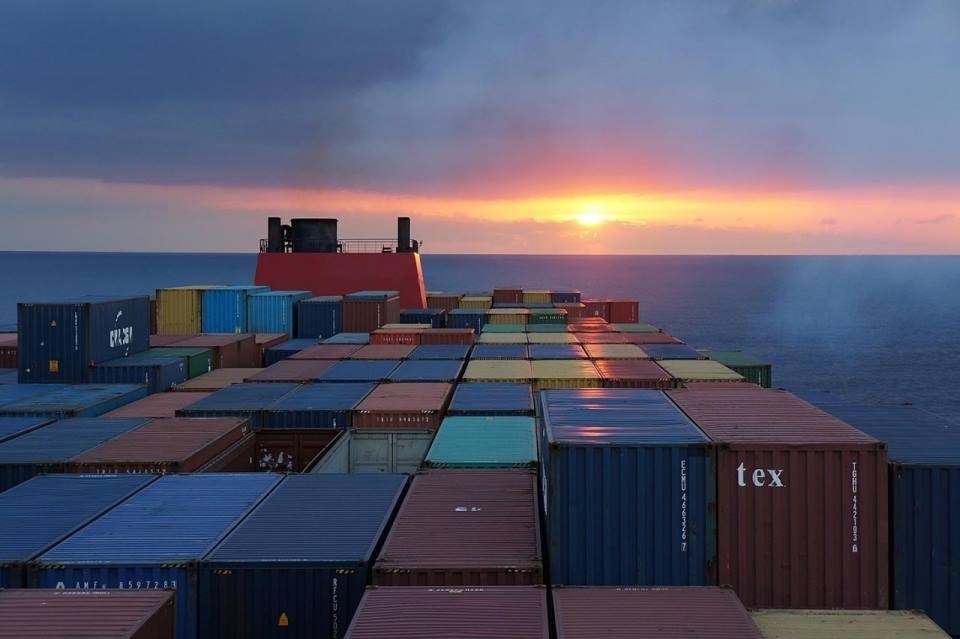





 Afrikaans
Afrikaans Shqip
Shqip አማርኛ
አማርኛ العربية
العربية Հայերեն
Հայերեն Azərbaycan dili
Azərbaycan dili Euskara
Euskara Беларуская мова
Беларуская мова বাংলা
বাংলা Bosanski
Bosanski Български
Български Català
Català Cebuano
Cebuano Chichewa
Chichewa 简体中文
简体中文 繁體中文
繁體中文 Corsu
Corsu Hrvatski
Hrvatski Čeština
Čeština Dansk
Dansk Nederlands
Nederlands English
English Esperanto
Esperanto Eesti
Eesti Filipino
Filipino Suomi
Suomi Français
Français Galego
Galego ქართული
ქართული Deutsch
Deutsch Ελληνικά
Ελληνικά Kreyol ayisyen
Kreyol ayisyen Harshen Hausa
Harshen Hausa Ōlelo Hawaiʻi
Ōlelo Hawaiʻi עִבְרִית
עִבְרִית हिन्दी
हिन्दी Hmong
Hmong Magyar
Magyar Íslenska
Íslenska Igbo
Igbo Bahasa Indonesia
Bahasa Indonesia Gaeilge
Gaeilge Italiano
Italiano 日本語
日本語 Basa Jawa
Basa Jawa ಕನ್ನಡ
ಕನ್ನಡ Қазақ тілі
Қазақ тілі ភាសាខ្មែរ
ភាសាខ្មែរ 한국어
한국어 كوردی
كوردی Кыргызча
Кыргызча ພາສາລາວ
ພາສາລາວ Latin
Latin Latviešu valoda
Latviešu valoda Lietuvių kalba
Lietuvių kalba Lëtzebuergesch
Lëtzebuergesch Македонски јазик
Македонски јазик Malagasy
Malagasy Bahasa Melayu
Bahasa Melayu മലയാളം
മലയാളം Maltese
Maltese Te Reo Māori
Te Reo Māori मराठी
मराठी Монгол
Монгол ဗမာစာ
ဗမာစာ नेपाली
नेपाली Norsk bokmål
Norsk bokmål پښتو
پښتو فارسی
فارسی Polski
Polski Português
Português ਪੰਜਾਬੀ
ਪੰਜਾਬੀ Română
Română Русский
Русский Samoan
Samoan Gàidhlig
Gàidhlig Српски језик
Српски језик Sesotho
Sesotho Shona
Shona سنڌي
سنڌي සිංහල
සිංහල Slovenčina
Slovenčina Slovenščina
Slovenščina Afsoomaali
Afsoomaali Español
Español Basa Sunda
Basa Sunda Kiswahili
Kiswahili Svenska
Svenska Тоҷикӣ
Тоҷикӣ தமிழ்
தமிழ் తెలుగు
తెలుగు ไทย
ไทย Türkçe
Türkçe Українська
Українська اردو
اردو O‘zbekcha
O‘zbekcha Tiếng Việt
Tiếng Việt Cymraeg
Cymraeg יידיש
יידיש Yorùbá
Yorùbá Zulu
Zulu